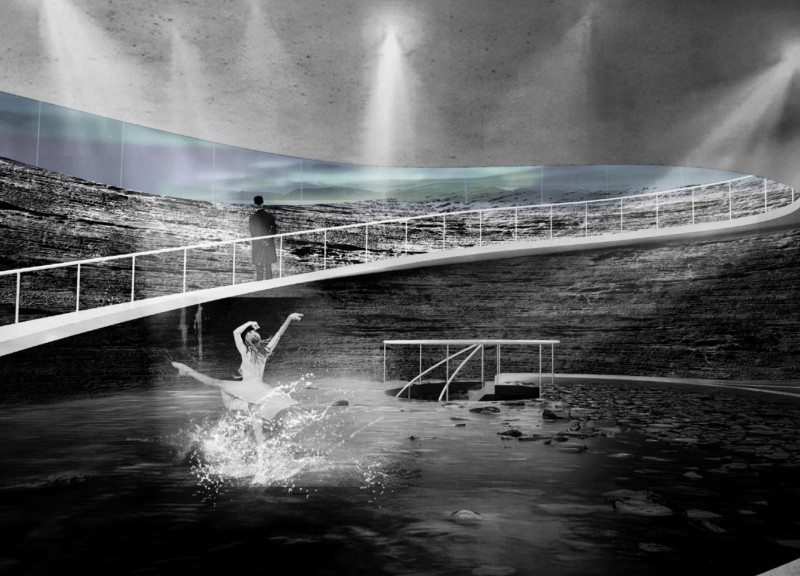5 key facts about this project
The Mirror Land Iceland Volcano Museum is located in Iceland's unique volcanic landscape, close to Myvatn Lake. It serves as a museum dedicated to the region’s geological features, aiming to educate and engage visitors. The design concept revolves around the idea of reflection, creating a connection between the building and the natural surroundings, allowing visitors to appreciate both simultaneously.
Building Form
- The structure features an arc-shaped top made of circular mirror glass, which reflects its environment. This material choice allows the building to blend with its surroundings, enhancing the views of Myvatn Lake and Hverfjall. The design takes advantage of the site's natural shape, promoting a relationship between the architecture and the landscape.
Entrance Sequence
- Visitors approach the museum via a suspended walkway that guides them from the original footpath to the main entrance. Upon arrival, they are welcomed by a pool of water, creating a link with nature. This design element emphasizes the connection between the built space and the outdoor environment, inviting visitors to consider their relationship with the landscape.
Exhibition Spaces
- The interior includes several exhibition halls, each providing different experiences. Exhibition Hall 1 is located near the base of a simulated crater, creating an intimate environment for visitors to engage with volcanic exhibits. Exhibition Hall 2 features an outdoor corridor alongside the indoor space, allowing attendees to enjoy curated displays while being aware of the natural landscape outside.
Upper Viewing Platform
- Exhibition Hall 3 serves as an open viewing area that offers clear views of Iceland’s volcanic formations. This hall is designed to be open and accessible, enabling visitors to appreciate the landscape while remaining protected from the elements. The connection between indoor and outdoor spaces throughout the museum encourages a heightened awareness of the surrounding environment.
A continuous spiral route connects the various exhibition areas, facilitating easy movement while enhancing the quality of light and views. The way the reflective surfaces interact with changing weather adds to its character, allowing the building to change with the time of day and the seasons.






















































